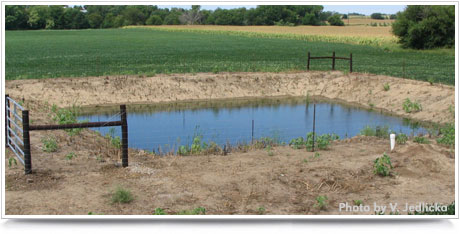
Before you Rent or Buy
Most town and city dwellers rely on a public waste water treatment system for sewage management. Users need only pay their bill to ensure sewage removal and treatment. Public waste water treatment systems may be available to some acreage dwellers, but most rely on private on-site waste water treatment systems. The design and installation of private systems for a residence are regulated by the Department of Environmental Quality (DEQ) and local agencies. The user is responsible for compliance with regulations. The user is also responsible for operating and maintaining the system to effectively remove waste water from the house and treat waste water to prevent bacteria, viruses, and other disease-causing pathogens from entering groundwater, surface water and/or coming in contact with humans. Before renting or buying an acreage, be certain you will have a properly designed, installed and functioning waste water treatment system capable of meeting your needs.
Selecting a System
A private waste water treatment system that is either incorrectly designed, located or installed can cause groundwater contamination (possibly including the drinking water supply), and is a risk to human health. To select the best waste water treatment system for a given acreage, and to design and install a system that will meet the needs of the user, you must take into consideration soils, hydrology, site evaluation and water use. Options include traditional septic tank systems, mound systems, lagoons, constructed wetlands, special developments/options and other innovative systems. After careful consideration, traditional septic tank systems and lagoons most often are selected.
A Septic System
The typical septic tank system consists of two components-the septic tank and the absorption field. With the septic tank, solids are separated from the liquid, undergo anaerobic digestion and are stored as sludge at the bottom of the tank. The liquid (septic effluent) flows to the absorption field where it percolates into the soil. The soil acts as a final treatment by removing bacteria, pathogens, fine particles and some chemicals.
The septic system has proven satisfactory for many areas when properly designed, installed and maintained. However, conditions do exist where this system is not suitable. Areas of seasonal high groundwater tables, bedrock in close proximity to the soil surface, or soils having very fast or very slow percolation rates are not suited for the septic system. Other limitations for this system include topography, small lot size and proximity to water supplies used for drinking or recreation.
Proper maintenance and care includes periodic pumping to remove floating scum and sludge that accumulates in the septic tank.
A Lagoon System
A lagoon system consists of a more or less square body of water. Home sewage is generally discharged directly into the lagoon, where evaporation for dewatering and both aerobic and anaerobic decomposition of sewage occurs.
Aerobic treatment occurs in the presence of oxygen and usually occurs near the lagoon surface. Aerobic treatment aids in reducing the odors released during anaerobic treatment and also provides additional treatment of home sewage. Wind movement aids in mixing oxygen into the lagoon surface and helps to increase evaporation.
The lagoon system is an effective method of home sewage treatment and is well suited for larger lot areas and soils having very slow soil percolation rates. With some soils, additional materials such as soda ash, bentonite or plastic liners may be required to completely prevent seepage of effluent.
Proper maintenance and care include periodic sludge removal and control of weeds on the banks.
Managing an On-site Waste Water Treatment System
A private waste water treatment system that is not properly operated and maintained can cause groundwater and surface water contamination and risk to human health. Proper operation and maintenance is the responsibility of the user, and includes controlling water use, appropriate product use and disposal, and proper care of the system. Users may need to reduce the amount of water used, spread water use out evenly over a period of time, avoid using and disposing of some products and materials, and find alternative disposal methods for some waste that would normally be disposed of in a public system. Users also will need to arrange for periodic checking and cleaning of the system, and for sludge removal and disposal.
Resources:
- Wastewater - Sewage: Nebraska Extension
- UNL Water Web site - http://water.unl.edu
- Properly Disposing of Your Leftover Medications
- Nebraska Extension Publications - Waste Water
- Nebraska On-site Waste Water Association
Need Additional Information? Visit What you need to know as a Nebraska landowner
Source: Adapted for Lancaster County, Nebraska from A Place in the Country: The Acreage Owner's Guide (EC97-2506C).